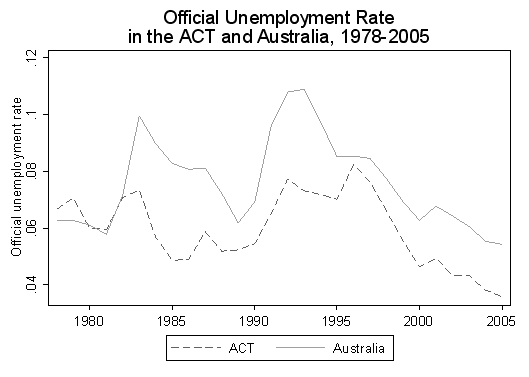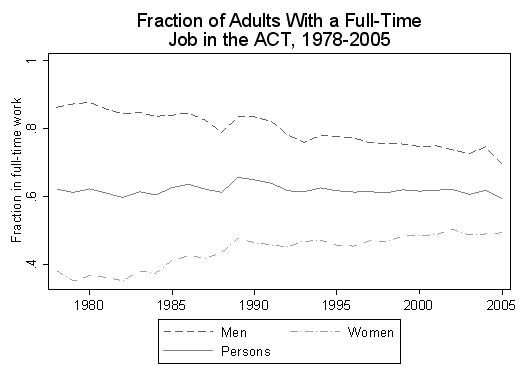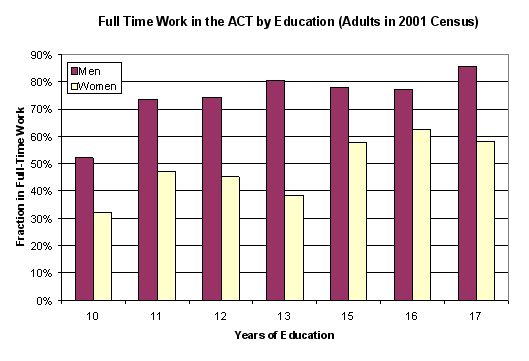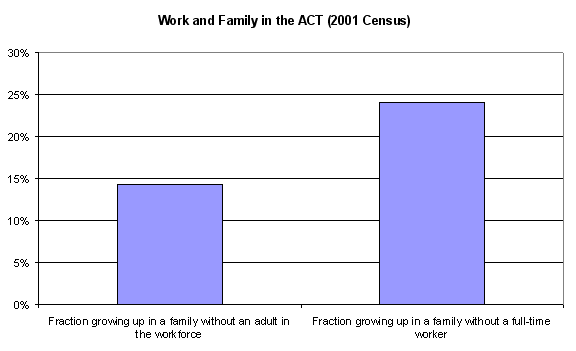Canberrans pride ourselves in our low official unemployment rate. Today, our headline unemployment rate is below 4 per cent, lower than it has been at any point in the past quarter of a century, and better than any other state or territory in Australia. In this environment, policy attention has shifted away from finding enough jobs, and towards the issue of skills shortages. Yet while it is true that skills shortages exist in particular areas, it would be wrong to assume that the issue of joblessness should be taken off the policy agenda. For while some skilled workers are in high demand, many unskilled workers in Canberra remain without a job.
In this debate, it is important to recognise that unemployment is not the only measure of jobs. The unemployment rate measures only those who are looking for work. Those who have given up looking, and many of those who are reliant on income support, are not counted as unemployed. And for major groups in the population, the fraction of those in work has been steadily falling.

Advertisement
To benchmark the ACT economy’s job-finding performance, a better measure than the unemployment rate is the share of adults in employment. On this figure, the proportion of adults (aged 25-64) with a full-time job has declined slightly since 1978. Today, only about 60 per cent of adults in the ACT have a full-time job. These trends are also true across Australia as a whole. (Paul Frijters and Bob Gregory, 2005, “From Golden Age to Golden Age: Australia’s ‘Great Leap Forward’?”).
Perhaps more troublingly, the average for adults has masked two major trends. Although women’s labour force participation has risen, the fraction of men with a full-time job has fallen. In the late-1970s, nine in ten Canberra men had a full-time job. Now, the figure is just seven in ten. Many of those who have dropped out of the labour force have moved on to income support, including the rapidly-growing Disability Support Pension.

The gap in full-time work is larger still if we look at the employment rates by education. For men with a university degree (15 or more years of education), employment rates are around 80 per cent. But for a man with a year 10 education, employment rates are only around 50 per cent. The same pattern is true for women: about 60 per cent of highly-skilled women have a job, compared with only about 30 per cent of low-skilled women.
The challenge for the ACT is clear: real jobs creation must be focused on those with least education. On a per-person basis, no state or territory in Australia is richer than the ACT. Yet among Canberra men with a year 10 education, half do not have a full-time job. Among Canberra women with a year 10 education, two-thirds do not have a full-time job. We can afford to do better than this.

Advertisement
Why does it matter if employment rates have fallen? The best reason to worry about employment rates is for the sake of children growing up in workless households. From careful research, we know that children do better in households with at least one parent in the labour force. Even apart from the extra income that comes from parental employment, the experience of growing up in an environment where parents prepare for work every day is more likely to prepare children for the world of work themselves. Otherwise, joblessness may persist across generations.
Yet in the ACT today, one in six children lives in a household where no adult has a job of any type, and nearly one in four lives in a household where no adult has a full-time job. If this pattern persists, there is a risk that children who grow up in workless households will themselves be less likely to find a job in the future.

Discuss in our Forums
See what other readers are saying about this article!
Click here to read & post comments.
1 post so far.